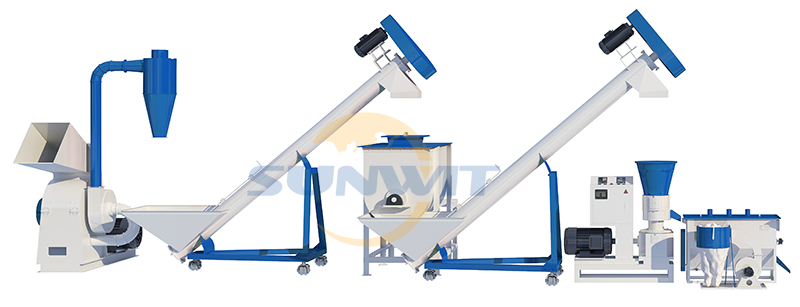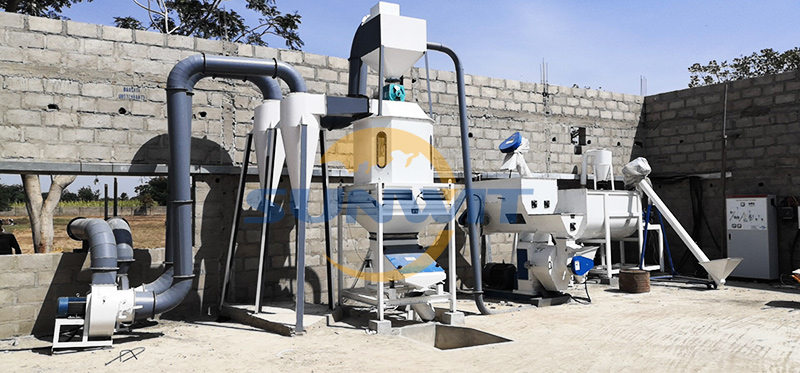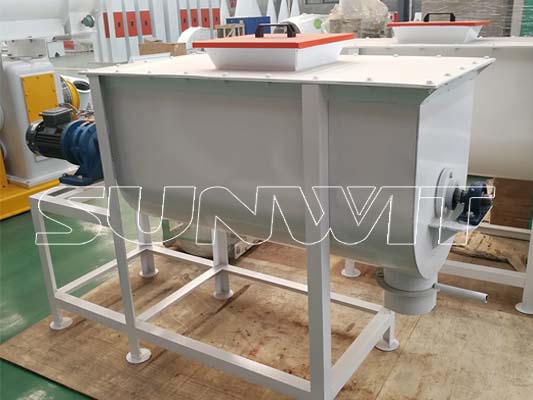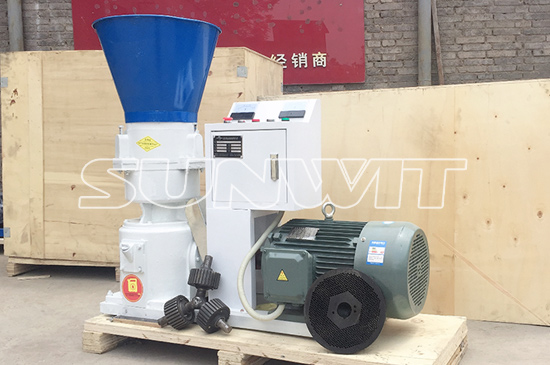Sunwit small feed pellet plant is a small feed mill that produces 500-800kg/h animal feed pellets widely used for the production of feed pellets for cattle, beef, sheep, goats, horses, chickens, broilers, ducks, geese, birds and fish (sinking fish feed pellets).
If you are planning to buy this plant and start your business, please contact us for inquiry or more details.
Email: [email protected]

However, for those who are planning to set up a small feed pelletizing unit with a capacity between 500-800kg/h, or want to start a small feed pellet manufacturing plant on a limited budget, this small feed plant is definitely what you need! This feed pelletizing unit has high automation, high output, low investment, small footprint and wide adaptability of raw materials.
Advantages of Sunwit 500-800kg/h feed pellet line
- It has the features of compact structure, low requirements for workshop conditions, low investment and small footprint.
- Small pellet feed mill is easy to install. There is no need for civil construction or welding at the project site. All machines can be used directly after completing the connection, so you do not need additional installation costs.
- Continuous production, easy to operate, less operators required: this small pellet feed mill requires only 1-2 operators and less labor, so the operating cost is lower. So the operating cost is lower, you can increase your net profit by reducing the production cost.
- Wide range of application: it can produce all kinds of feed pellets for poultry, livestock, fish, etc., suitable for small and medium feed production.
1-1.2T/H Cattle Feed Production Line to Nigeria

This 1-1.2T/H cattle feed production lines were produced according to customer requirements. This small feed production line adopted SKLH-350 ring die pellet machine. It is ordered by one of our client in Nigeria. Feel free to tell us your business plan and cost budget, then we can offer you a customized business plan of feed processing line according to your needs.
Feed Pellet Making Process
Crushing

This is the first step in ensuring that all large particles are crushed into powder. Pellet mills have mills that are specifically designed for pulverizing. Cornmeal, broom, wheat, beans, oilseed meal, and soybean meal may be large particles and therefore must go through this process. They are taken to a grinder where they are crushed into a fine powder. Without this process, it may be nearly impossible to make pellets.
Mixing

This is where all the ingredients are mixed. It has a big vat where all the ingredients are placed in different proportions. With the help of the machine, the powder is mixed in different proportions to form a mixture, which is known as a feed net.
Pellet Manufacturing

Pelleting systems include pellet mills for animal feed. This is to press the feed web and form pellets. It enables the pellets to become uniform in size. These include the same diameter and length. This is to ensure that the animal feed pellet maker produces the required size for different animals to ensure that it delivers what is needed and also to avoid wastage during the feeding process.
Cooling
After crushing, mixing and pelletizing, the last process is cooling. The machine is small and easy to transport and install. In pelletizing systems, the pellets tend to generate heat at temperatures between 70 and 85 degrees. This heat must be reduced to room temperature to meet storage requirements. Without the cooling process, the hot pellets can produce mold and cause pellet damage.
Implications of using animal feed pellet machine
- By making compressed feed ingredients into compressed feed pellets, it is possible to combine all the nutrients needed for animal growth and prevent animals from picking at their food in order to maximize economic efficiency.
- In addition, making feed pellets can also save feed. For example, if you feed your sheep with powdered feed, it can easily fall apart and make them picky eaters. What’s more, the wind will also blow up the powdered feed, causing waste and the utilization rate of the feed is only 92%. But if it’s made into pellets, sheep can’t choose what they like to eat, so the feed utilization rate is 99%, which increases the feed utilization rate by 7%. The same is true for other animals.
- Producing your own feed pellets with a feed pellet maker saves you a fortune in buying prepared feed pellets and allows you to adjust the composition of the pellets according to the animal’s growth stage.
